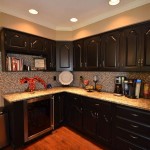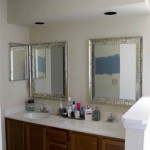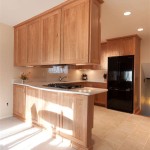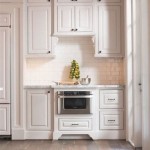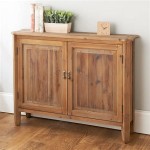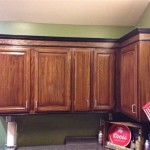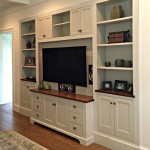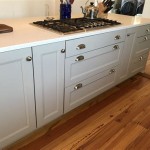Where Do You Put a Knob on Kitchen Cabinets?
Cabinet knobs, seemingly insignificant details, play a crucial role in both the functionality and aesthetics of a kitchen. Their placement significantly impacts how easily cabinets open and close, and contributes to the overall visual appeal of the space. Choosing the correct placement requires careful consideration of several factors, ranging from ergonomics to design principles.
Ergonomics and Functionality
The primary purpose of a cabinet knob is to provide a comfortable and efficient grip for opening and closing cabinet doors and drawers. Placement should prioritize ease of use for individuals of varying heights and physical capabilities. For base cabinets, knobs are typically placed vertically 2 to 3 inches from the corner opposite the hinges. This location provides optimal leverage for pulling the door open. Placing the knob too close to the edge can strain the hand and fingers, while positioning it too far in can make it difficult to grasp fully.
Upper cabinets present a different set of considerations. Knobs should be placed low enough to be easily reached but high enough to avoid scraping knuckles on the cabinet frame above. A common practice is to position them 2 to 3 inches from the bottom corner opposite the hinges, mirroring the placement on base cabinets. However, depending on the height of the cabinets and the user's reach, slight adjustments may be necessary. For exceptionally tall upper cabinets, placing the knob slightly higher than the standard position may prove more comfortable.
Aesthetic Considerations
While functionality remains paramount, the placement of cabinet knobs also significantly influences the overall visual harmony of the kitchen. Aligning knobs consistently across all cabinets creates a sense of order and symmetry, enhancing the aesthetic appeal. Consistency involves maintaining a uniform distance from the corner of each cabinet door and drawer front. This uniformity creates a balanced and professional look, making the kitchen appear more polished and well-designed.
The style of the cabinet door also influences knob placement. For shaker-style doors, with their recessed panels, the knob is generally centered within the rail frame. This placement complements the door's design and preserves the clean lines. On flat-panel or slab doors, more flexibility is available, allowing for either corner placement or centering within the panel itself. Ultimately, the chosen placement should complement the overall design scheme and create a cohesive look.
Cabinet Hardware and Door Style
The specific type of hardware chosen also plays a role in determining ideal placement. Larger knobs or pulls require more space and might necessitate a slightly different position than smaller, more delicate hardware. Pulls, in particular, offer various mounting options, including horizontal and vertical placement, which need to be carefully considered in relation to the door style and overall aesthetic. For instance, vertical pulls often work well on drawers and tall pantry doors, while horizontal pulls complement wider base cabinets.
The size and proportion of the cabinet doors and drawers themselves should also be factored into the equation. Large, heavy doors may benefit from two knobs or a longer pull to distribute the weight and facilitate easier opening and closing. Conversely, smaller drawers or doors may appear overcrowded with oversized hardware, necessitating a smaller knob or a strategically placed single pull.
Special Considerations for Drawers
Drawers require a slightly different approach to knob placement than cabinet doors. For single drawers, centering the knob horizontally and vertically provides a balanced and symmetrical appearance. For drawers with two knobs, maintaining equal spacing from both sides and the top and bottom edges is crucial. This symmetrical placement ensures even weight distribution when opening the drawer and contributes to a visually pleasing aesthetic.
The depth of the drawer also influences knob placement. For deep drawers, placing the knob slightly higher than center may improve leverage and make it easier to pull the drawer open. Conversely, for shallow drawers, centering the knob vertically remains the most practical and visually appealing option.
Working With Irregularities
Not all kitchens are designed with perfect symmetry. Dealing with architectural quirks or unusual cabinet sizes requires flexibility and a willingness to adapt standard placement guidelines. In such situations, prioritizing functionality and visual balance remains essential. Carefully assess the specific circumstances and adjust knob placement as needed to ensure comfortable and efficient operation while maintaining a cohesive overall appearance.

How To Place Cabinet Knobs Pulls

How To Place Cabinet Knobs Pulls

Learn How To Place Kitchen Cabinet Knobs And Pulls Cliqstudios
Cabinet Hardware Placement Where To Put Knobs And Handles Vevano

Knobs Vs Pulls In The Kitchen Beth Lindsey Interior Design

Design 101 Cabinet Hardware Placement Lark Linen

Design 101 Cabinet Hardware Placement Lark Linen

Kitchen Cabinet Handle Placement Dos And Don Ts Living Letter Home

How To Install Knobs On Cabinet Doors

Where To Put Knobs And Handles On Kitchen Cabinets 136 Home
Related Posts

